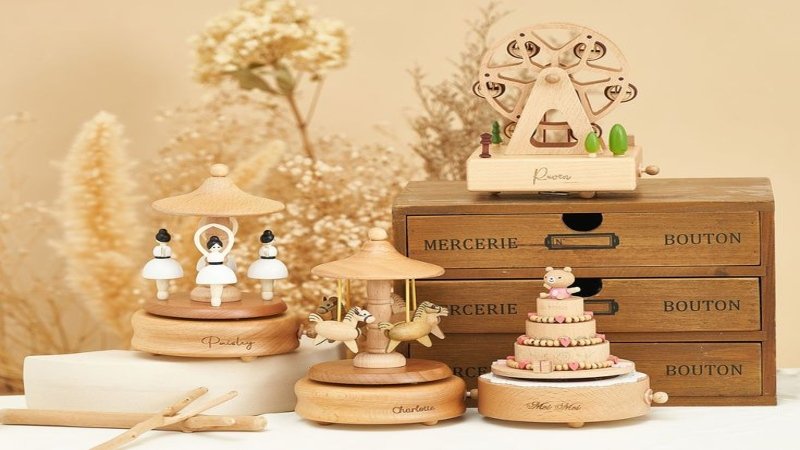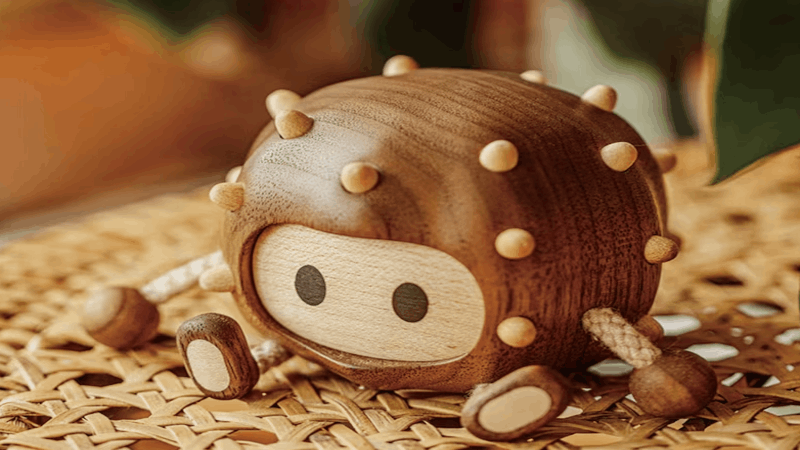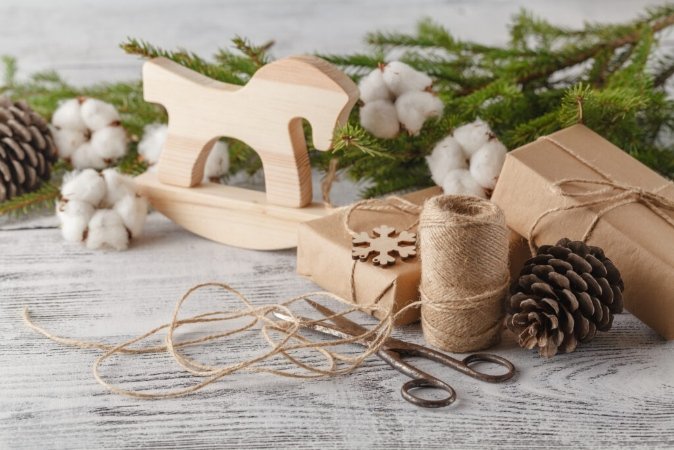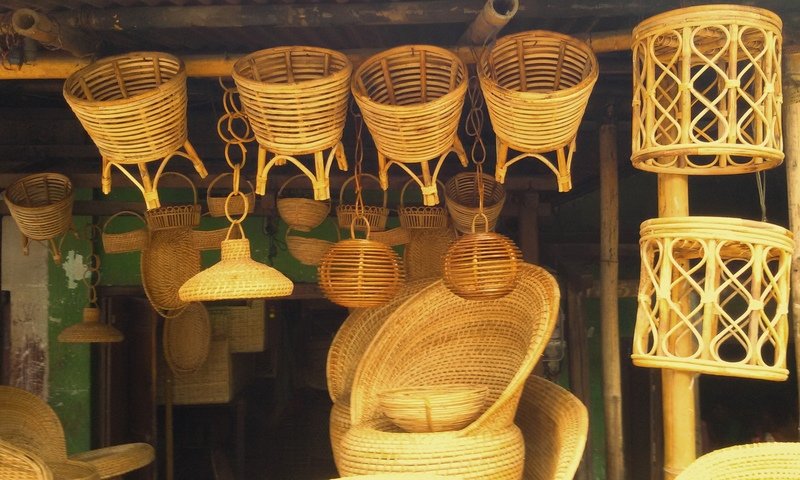No products in the cart.
Blog
Wooden Toys For Children : Safe And Sustainable Fun
There’s a timeless appeal to classic playthings, and wooden toys for children have captivated young minds for generations with their simplicity and charm. Free from harmful chemicals, wooden toys are a healthier choice, fostering creativity and enhancing cognitive and motor skills.
The benefits of wooden toys and the reasons they are the ideal addition to any child’s playtime will be explored in this blog. We’ll provide you with some tips to assist you in selecting the best wooden toys for your kids.
The Benefits of Wooden Toys for Children

Increased imagination and creativity, a calming tactile sensation, and general growth are the benefits that wooden toys can offer. They guarantee a healthier play environment because they are strong, long-lasting, and frequently composed of natural materials. Wooden toys also help with cognitive and motor skill development and are environmentally friendly, supporting sustainability.
Safety and Durability of Wooden Toys
They’re a great option for kids’ playthings because of their well-known qualities of durability and safety.
- Made from natural materials: Wooden toys are typically free from harmful chemicals, making them a safer choice for children.
- Resistant to breaking: Unlike plastic toys, wooden toys are less likely to break into small, hazardous pieces, reducing choking hazards.
- Long-lasting: Wooden toys are durable and can withstand rough play, making them a long-term investment.
- Less likely to splinter: High-quality wooden items are sanded and finished smoothly, minimizing the risk of splinters compared to lower-quality plastic toys.
Wooden toys are safe and long-lasting so children can play with them worry-free.
Educational Value: Fostering Cognitive and Motor Skills
Children’s cognitive and motor development is greatly enhanced by wooden toys, which also benefits their general educational growth.
- Enhances fine motor skills: Activities such as stacking, building, and fitting pieces together help develop fine motor skills.
- Promotes spatial awareness and problem-solving: Playing with wooden toys encourages children to think spatially and solve problems.
- Encourages logical thinking and creativity: Logical thinking is fostered and imagination and creativity are stimulated by the simplicity of wooden toys.
- Open-ended design: Many wooden toys are designed to be versatile, allowing children to explore and learn independently at their own pace.
Eco-Friendliness: Environmental Benefits of Wooden Toys
Because wooden toys are beneficial for both the environment and children, environmentally conscious parents can choose them as an eco-friendly option.
- Made from renewable resources: Wooden toys are an environmentally friendly option because it is a renewable resource.
- Biodegradable: Wooden toys are biodegradable, reducing long-term environmental impact compared to plastic toys.
- Lower carbon footprint: The production process for wooden toys generally has a lower carbon footprint than that of plastic toys.
- Supports conservation of natural resources: Choosing sustainably sourced wood helps conserve natural resources and promotes environmental responsibility.
What Type of Wood is Used for Children’s Toys?

Using the right kind of wood is essential for making children’s toys safe, durable, and pleasurable. Some of the most popular types of wood are listed below:
- Maple is known for its hardness and durability, making it ideal for toys that can withstand rough play.
- The risk of splinters will be reduced by its smoothness, making it safe for children.
- Beech wood is strong and durable so it is perfect for complex and elaborate toys like puzzles. Its fine grain and resistance to splintering make it a reliable choice for long-lasting toys.
- Birch is strong and durable with a fine grain, making it suitable for small toys and components. Its light color is easy to paint or finish, offering versatility in design.
- Pine is a reasonably priced, lightweight softwood that is easy to deal with. For larger toys like pull toys and play chests, it’s a fantastic alternative because wood can be polished neatly to avoid splinters.
- Cherry wood’s clean grain and natural color are highly prized for their ability to acquire a beautiful patina over time. High-end, visually appealing toys are perfect for this long-lasting, non-toxic material.
- Oak is very strong and durable, often used for larger toys that need to withstand heavy use. It is appropriate for objects like rocking horses because of its noticeable grain and ability to withstand dents and scratches.
- Rubberwood is an environmentally friendly and sustainable solution because it is a byproduct of the rubber industry. It’s firm, robust, and smooth, making it ideal for a variety of educational and baby toys.
Are Wood or Plastic Toys Better for Children?

For kids’ toys, there are definite benefits and things to consider when selecting between plastic and wood. The differences can be better understood by looking at this thorough comparison.
| Aspect | Wooden Toys | Plastic Toys |
| Safety | Natural materials, less likely to break into small pieces | May contain harmful chemicals, can break into small pieces |
| Durability | Long-lasting, withstands rough play | Can break more easily, especially lower-quality plastics |
| Environmental impact | Renewable, biodegradable, lower carbon footprint | Non-renewable, not biodegradable, higher carbon footprint |
| Educational value | Enhances motor skills, spatial awareness, creativity | Often electronic, can limit imaginative play |
| Aesthetic Appeal | Natural, visually appealing, develops patina | Brightly colored, may fade or damage over time |
| Cost | More expensive initially, long-term value | Cheaper initially, may require frequent replacements |
| Safety standards | High safety standards, especially when certified | Must be checked for certifications, potential harmful substances |
Wooden toys offer safety, durability, and environmental benefits, while plastic toys can be more affordable and diverse but come with potential safety and environmental drawbacks. The choice depends on individual preferences and priorities.
How to Identify Safe Wood for Children’s Toys?
For children’s well-being, wooden toy safety must be guaranteed. Here are several key ways to identify safe wood for children’s toys:
- Check for certification: Look for wood that is certified by organizations like the Forest Stewardship Council (FSC) to ensure it comes from responsibly managed forests.
- Non-toxic treatment: Ensure the wood has not been treated with toxic chemicals or pesticides.
- Smooth finish: Check that the wood has been sanded smooth to prevent splinters.
- Hardwood preference: Hardwoods are less prone to splintering and more durable than softwoods. Examples of such hardwoods are maple, beech, and birch.
- Sustainability: Choose woods that are sustainably sourced, such as rubberwood, to ensure an eco-friendly choice.
- Avoid allergens: Be aware of potential allergens; some woods can cause allergic reactions, so choose hypoallergenic options when possible.
- Test reports: Look for toys that come with safety test reports, indicating that the wood has been tested for harmful substances.
Make sure the wooden toys you select are sturdy, safe, and eco-friendly according to these criteria, which will let kids play in a secure and entertaining setting.
Non Toxic Wood Finish for Children’s Toys
When finishing wooden toys for children, it’s essential to use non-toxic materials to ensure safety. Several natural and safe options are available:
- Tung oil: Derived from tung tree seeds, it penetrates deeply, providing a durable, water-resistant finish. It is non-toxic once cured and offers a natural, matte appearance.
- Beeswax: A natural wax that provides a protective and non-toxic finish. It is simple to apply and keep clean, and it provides the wood with a gentle gloss.
- Shellac: Made from lac bug resin and dissolved in alcohol, shellac provides a glossy finish that is safe for children once the alcohol evaporates.
- Food-grade mineral oil: Clear, odorless, and safe for children’s toys. It is commonly used for finishing wooden utensils and cutting boards.
- Using these non-toxic coatings keeps wooden toys safe for children to play with while also improving the wood’s natural beauty and durability.
Conclusion
Wooden toys for children are more than just playthings; they are tools that foster creativity, enhance cognitive development, and promote safer, healthier play. Choosing wooden toys supports sustainability and provides timeless charm, making them an excellent choice for any child’s playtime.
Hello, I am Althea Stone, a devoted enthusiast of handicrafts, finds solace and creativity in the intricate artistry of handmade goods. My passion for crafting extends beyond mere hobby, serving as a gateway to self-expression and a means to infuse everyday life with beauty and ingenuity.


